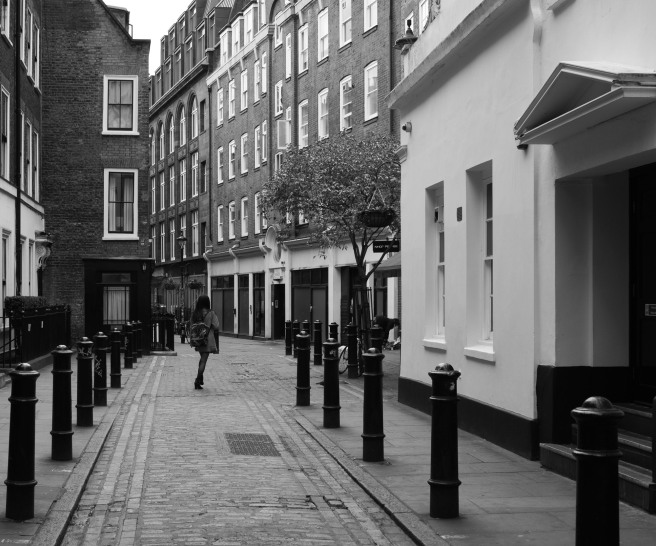Here are some questions I posed to my tutor and his responses regarding Assignment 2:
Me:
I was interested in brief encounters with strangers in the city street and how then those moments are gone. As a person growing up in a big city like London these fleeting encounters represented something of a feeling of loneliness which I would think I wasn’t alone in feeling. Also they mirrored my own perception of different photographs’ instantaneity as you’re about to take them – one minute they’re there and then they’re just a (semi-permanent) memory. What better way to capture a fleeting moment than with a camera which produces material images that only appear virtually nowadays? One method to visualise these fleeting moments might be through changing light and how that too is transient.
By recording the fleeting encounters with my camera in an ephemeral manner I could connate that the image itself was fleeting just like the encounter.
I also noticed while re-reading the brief for Assignment 2 that I would have to submit the assignment on a blog. I began to see a link between the work I might be producing for the assignment and the way it was displayed in the blog format. This link was that both the blog (which is a form of the virtual world and so highly transient) and the photographs (both in form and content) are fleeting in terms of their materiality. One way I could envisage submitting the second assignment in blog format was to rephotograph the photographs taken for the assignment but on a black backdrop so it appears like the photographs are floating in space. The connotations of this could be that the fleeting moment had gone and exists in a vacuum only. Yet here it is, on my blog representing itself as a mirror of visual culture. Where before the image might have appeared in a newspaper/magazine, now the photograph is represented in a vacuum of space. This viewer of the blog could infer loneliness from this which also coincidentally would be the theme for my photographs recording the fleeting encounters.
The last alternative was to actually meet the stranger in the brief encounter in the following way:
- Go up to people with an Instax camera
- Ask to photograph them, they get to keep the photo!
- But in return you get to take a photo of the photo up close with them out of focus in the background.
- Displayed on a blog this reflects the fleetingness of the photograph and the fleetingness of the media world.
A link to memories with the fleetingness reminding you of lost moments. Also the people out of focus in the background is a reference to this being a memory formed.
I have been carrying out the approach where I photograph my brief encounters with people from the side or their back using lighting which reflects loneliness in my eyes.
My Tutor:
Ephemerality of digital imagery is interesting as an abstract concept. If you shoot people walking away it will be harder to make a strong image. You’ll rely more on the concept, so it’ll have to be clear.
The Instax idea sounds alright. Yes it’s constructed in a way but you’re encouraged to interrogate documentary in the broadest possible sense. I think you’ll be fine if you include a clear rationale.
My Reaction:
From my tutor’s response I was able to identify firstly that the first method of photographing people from the back or side would not be as visually powerful. Secondly and more importantly for me his response confirmed my ‘new’ idea was sound and related back to documentary in his opinion. Furthermore I could now see the real direction my work was leading towards which consisted of ephemerality of the image. In particular I established:
‘By recording the fleeting encounters with my camera in an ephemeral manner I could connate that the image itself was fleeting just like the encounter.’
I would be photographing fleeting encounters carried out using an Instax camera which further reflects the ephemerality of the image. Also I would make sure my project’s rationale was clear so as to back up my somewhat complicated message.
References:
Van Den Heuvel (2005). Mirror of Visual Culture. Documentary Now! [online] Available at: https://www.oca-student.com/sites/default/files/oca-content/key-resources/res-files/heuvel_discussingdocumentary.pdf [Accessed 3/3/2017].














